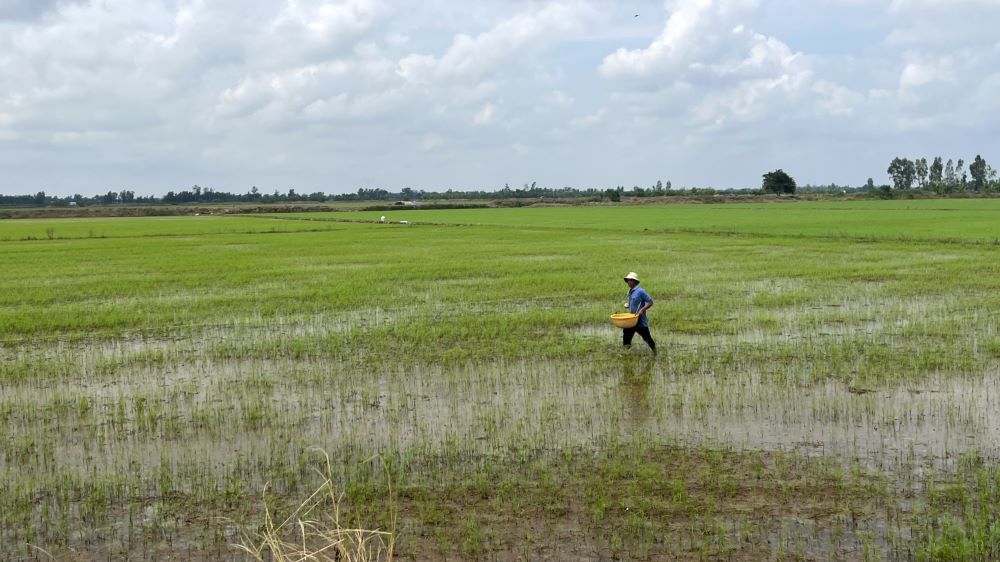In recent days, the Mekong Delta region has experienced heavy and prolonged rains. The rain occurred during the sowing period, affecting many rice fields and reducing the germination rate.
In Vi Thuy district, Hau Giang province, after planting 7 hectares of winter-spring rice, Mr. Tran Van Chanh encountered unseasonal rain, which left him unable to react in time.
"Newly sown rice seeds are buried in the rain, the germination rate is reduced by about 30%. Every year there is unseasonal rain but the rain is small, this year the weather is erratic, due to subjectivity, when it rains, we cannot react in time," said Mr. Chanh.

It is known that to sow the winter-spring rice crop, Mr. Chanh spent more than 10 million VND to prepare the fields, pump water, and store rice seeds even though the rice had not yet been planted. After the impact of the rain, he had to sow a second time and pay for fertilizer and pesticides, causing production costs to increase by more than 4 million VND.
In Can Tho City, worried about the unusual weather causing harm and disease to rice plants, Mr. Dang Van Tu (Thoi Lai district) has been actively visiting the fields in recent days.
"The changing weather makes rice susceptible to diseases, including brown planthoppers and yellow dwarf disease. The cost of fertilizers, pesticides, and gasoline to pump water is 2-3 million VND higher than the previous crop," said Mr. Tu.
According to the Department of Agriculture and Rural Development of Can Tho City, for the 2024-2025 winter-spring rice crop, the city plans to plant 72,100 hectares. The first rice sowing schedule is expected to be from November 3 to 9 and the second sowing will be from November 25 to December 1. Farmers in the city will proactively monitor the weather, and when the flood waters recede, they will sow early to avoid drought and salinity next year.
In Hau Giang, the 2024-2025 winter-spring rice crop, the province plans to sow 73,500 hectares, with an estimated yield of about 552,320 tons. Farmers have now completed the first sowing phase, sowing more than 15,000 hectares. Phases 2 and 3 will be sown for the main winter-spring rice crop, low-lying areas, where flood waters recede slowly every year, sowing must be delayed.

According to the National Center for Hydro-Meteorological Forecasting, from October to December 2024, the ENSO phenomenon is likely to transition to La Nina state with a probability of 60-70%. The rainy season in the South may end later than usual (around the second half of December 2024).
From December 2024 to May 2025, the water level at the headwaters of the Mekong River will gradually decrease and will be 0.1 - 0.2 m lower than the average of many years. Given the above situation, saline intrusion in the Mekong Delta in 2024 - 2025 is forecasted to be higher than the average of many years.
Local agricultural sectors recommend that farmers need to comply with the sowing schedule, proactively and closely monitor developments and forecast information on rain and floods to promptly respond to unusual developments; regularly visit fields to promptly detect diseases on rice plants and proactively prevent them...











